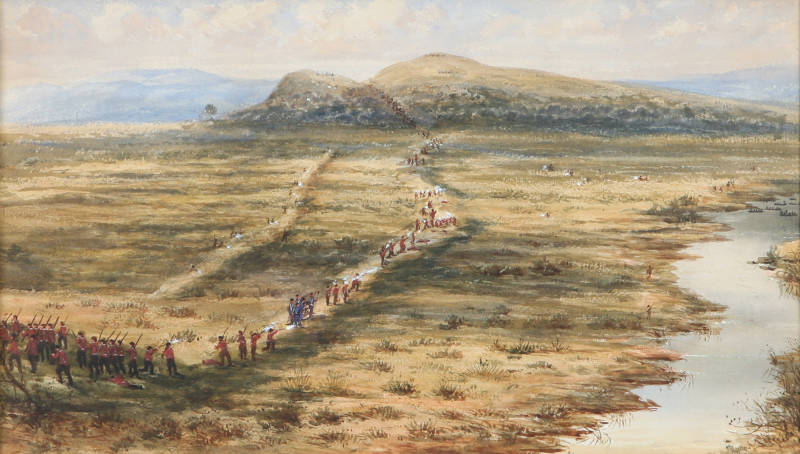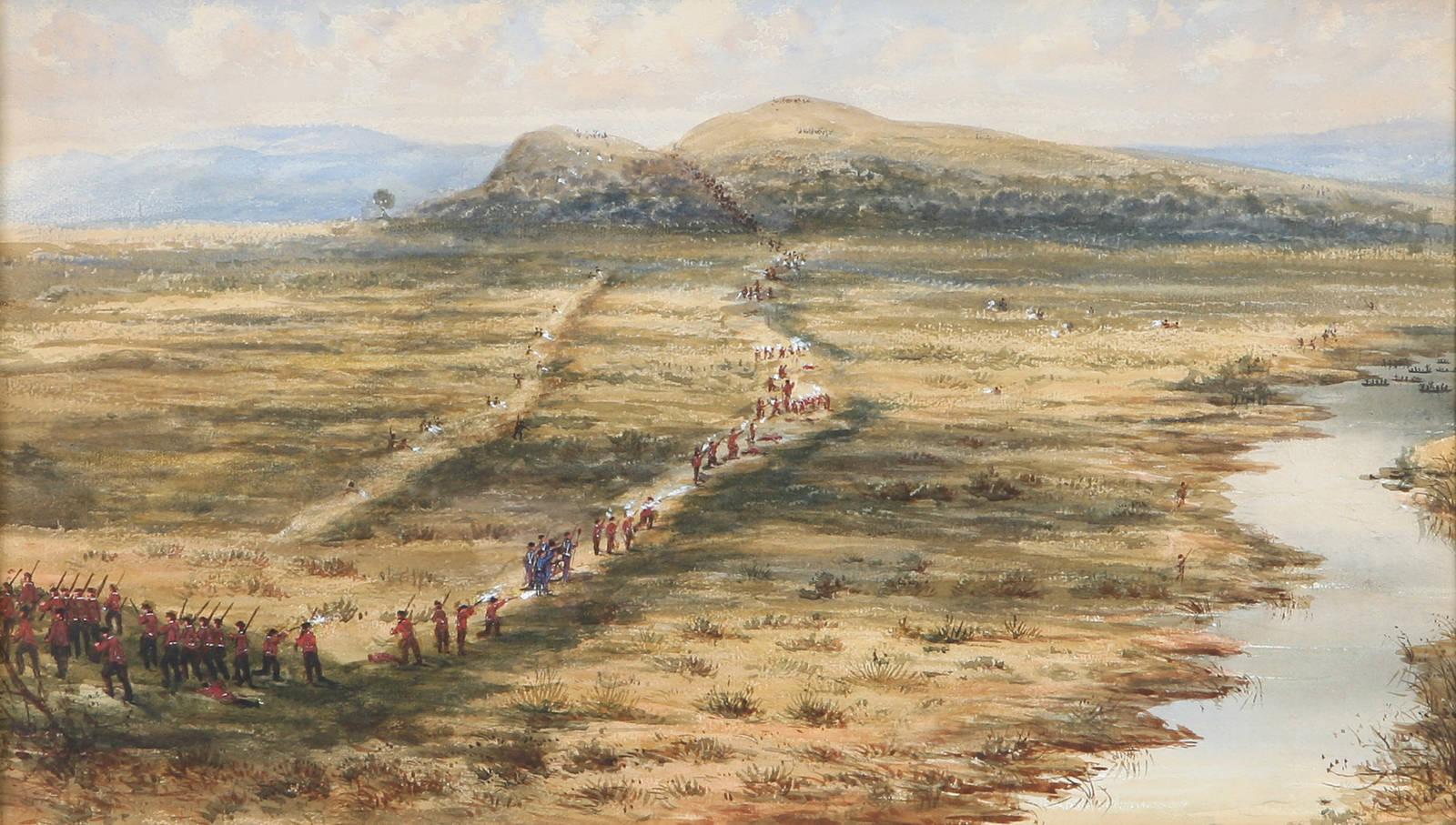PAGE, George Hyde;
Skirmish at Saint John’s Wood, Whanganui
1847
Watercolour on paper
330 x 585mm

The following text comes from the catalogue for the exhibition Tirohanga Whānui.
An inconclusive skirmish took place on 20 July 1847 at the climax of a month-long blockade which had confined settlers within the narrow limits of Wanganui township. In The New Zealand Wars, James Cowan precisely described the action depicted in this watercolour.
About 400 Māori had appeared on the low hills above the town, moving down towards it. An even larger number occupied a level ridge above the bush known as St John’s Wood, a little over a mile south of the town stockade. This main body awaited the result of preliminary skirmishing, hoping that the British soldiers would be induced to come out on to the level ground, where lightly equipped and mobile Māori would hold the advantage. Small parties of warriors were scattered over the ground between the ridge and the town, and on the hills to the north.
The only convenient approach from the town was along a narrow strip of ground, with swamp on either side. The first British parties were soon in action followed by reinforcements from the stockades, until eventually 400 soldiers were engaged in the skirmishing. Māori leapt from their cover, some firing, some dashing in with their kakauroa (long-handled tomahawks). The only line of withdrawal was along the natural causeway through the swamp. When most of the Māori were within about 15 yards of them, the British turned and charged. Several Māori were bayoneted in the melée. Further Māori advance was stopped. The main body reoccupied their trenches and the slopes of the hill south of the gully. From these positions they continued to fire on the troops so long as the latter were within range. The day’s engagement ended indecisively.
The artist, Lieutenant George Hyde Page, had been gazetted ensign in the 58th Regiment in 1841. In 1843, he was promoted to the rank of lieutenant, and he arrived in Aotearoa in 1845. He fought in the land war in the north and was present at the attack of Kawiti’s pā at Ruapekapeka in the Bay of Islands. Following his participation in the war at Whanganui, he was stationed in Tāmaki Makaurau, where he married the daughter of General Pitt, Lieutenant Governor of New Ulster, as the northern part of New Zealand was then known. After Pitt’s death in 1851, Page returned to England. He later served in the Crimea, rising to the rank of Major General in 1882.
Exhibition History
Tirohanga Whānui: Views from the Past, Te Kōngahu Museum of Waitangi, 15 April to 15 September 2017
Provenance
1986–
Fletcher Trust Collection, purchased from McArthur and Company, 12 August 1986, lot 376
–1986
Unknown

